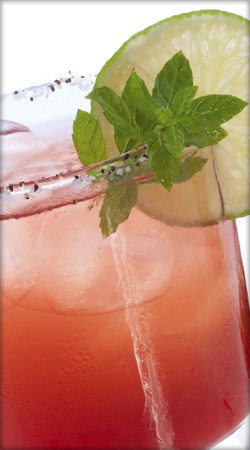
 Heating up the culinary charts as a major trend the last few years is herb infusion. Known to enhance savory dishes and add appeal to desserts, unique and exotic flavor creations are being found in restaurants and cafés across the United States by simply adding a little herb.
Heating up the culinary charts as a major trend the last few years is herb infusion. Known to enhance savory dishes and add appeal to desserts, unique and exotic flavor creations are being found in restaurants and cafés across the United States by simply adding a little herb.
Best defined as “extracting flavor from a fresh or dried herb or spice,”1 an infusion can be an intense and creative way to provide flavor in a finished product. Perhaps the most common and best-known example of an infusion is tea–dry tea leaves are submerged into hot water and allowed to “steep” (or sit) for a certain amount of time until the desired intensity of flavor is achieved. The steeping process is the second of two important steps in creating an infusion in culinary and pastry applications, the first of which is heating. While it is technically possible to infuse a flavor into a cold liquid, warm liquids optimize flavor extraction and allow for a bolder final flavor.2 Once a liquid is heated (usually to a boil or at least a strong simmer), the flavor component is added and the mixture is allowed to steep.
The time required for steeping may vary greatly depending on the type of ingredient as well as its level of freshness. For example, fresh orange zest imparts itself quite quickly into warm milk, while a dried cinnamon stick would entail significantly more time to release its flavor into the milk.3 In the case of infusions, trial and error is extremely important to determine how long it takes to achieve your personal flavor preferences and intensity. Some flavor components may become overpowering or too intense if left to steep too long. Green tea is a good example of this–if left to sit for too long it becomes bitter and earthy, no longer providing a desirable flavor profile. It is also important to understand the final application of your infused flavor, since sometimes the infusion must be stronger than usual in order to not be lost in the final product. For frozen dessert suppliers of gelato or ice cream that’s made with a high milk fat percentage, a stronger initial flavor infusion is necessary in order to ensure that the flavor is not lost among the fattier components of the finished frozen dessert.
When it comes to food and beverages, infusions are a source of uniqueness and innovation–often pairing new and interesting flavors to create unexpectedly delicious results. For example, spicy chili flavor infused into a chocolate dessert is increasingly popular and satisfying for those who like a little bit of kick in their chocolate. Fresh basil infused into warm milk that is then flavored with coconut to create a coconut basil gelato allows for an interesting twist on a tropical classic. A lemon thyme sorbet that utilizes fresh thyme can be a refreshing complement to a light summer meal. Coffee-infused whipped cream may provide the perfect final touch to a special plated dessert. Additionally, the infusion of edible flowers such as lavender and rose has allowed for a wide array of imaginative flavor combinations.
Infusions are about as limitless as your imagination, and they allow for a fresh, natural punch of flavor in your finished product. Infusions lend themselves to creative minds and are a simple way to highlight a particular seasonal ingredient such as a fresh herb, or to simply bring your favorite spice to the forefront of your finished product. Allow yourself to be inspired, and what will follow is sure to impress your customers with constantly new and innovative flavor pairings.
For a step-by-step video and a few key infusion tips, be sure to view the following video presented by Food Network® star and culinary professional Alton Brown: www.foodnetwork.com/videos/herbal-infusion/1081.html.
Resource:
1,2,3 Savory Sweets. Amy Felder. John Wiley & Sons, Inc. 2008. Hoboken, NJ.
